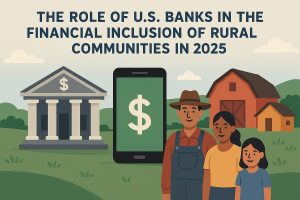Over the past few years, rising interest rates have become a central topic in economic discussions worldwide. For individuals, this shift directly influences borrowing costs, credit card balances, and overall financial planning strategies. While interest rates are a tool used by central banks to control inflation, they also shape how households manage debt, savings, and investments.
The goal of this article is to explore how higher interest rates affect everyday finances, from mortgages to consumer loans, and to provide practical guidance on navigating this changing environment. By breaking down key concepts and highlighting actionable strategies, readers will be better equipped to adapt their personal financial plans and avoid common mistakes that can lead to financial stress.
Understanding the influence of interest rates

At its core, an interest rate represents the cost of borrowing money. When rates increase, loans become more expensive, reducing the affordability of large purchases such as homes and cars. According to recent financial data, mortgage rates in several countries have doubled compared to five years ago, significantly raising monthly payments for new homeowners. This trend has created both challenges and opportunities, as some borrowers struggle while savers benefit from higher returns on deposits.
For individuals carrying credit card debt or personal loans, even a small percentage increase can substantially raise monthly obligations. Conversely, those with savings accounts or fixed-income investments may find themselves earning more than in previous years. The dual nature of interest rate movements makes it essential to evaluate one’s financial situation and adjust plans accordingly.
Managing debt in a high-rate environment
One of the most pressing concerns for households is debt management when interest rates climb. Carrying balances on variable-rate products, such as credit cards or adjustable-rate mortgages, can quickly become unsustainable. For example, a $10,000 credit card balance at 18% interest costs about $150 monthly in interest alone, and that figure rises steeply as rates move upward.
A common strategy is to prioritize paying down high-interest debt as quickly as possible. Consolidation loans or balance transfer offers can also help reduce costs if secured at a lower rate. By focusing on eliminating expensive obligations, individuals can free up cash flow, creating a stronger financial foundation even in a challenging environment.
Opportunities for savers and investors
While borrowers may feel the pressure of higher costs, savers and investors can take advantage of improved returns. Savings accounts, certificates of deposit, and government bonds often yield significantly more during periods of elevated interest rates. For risk-averse individuals, this presents a safer path to grow wealth without heavy exposure to volatile markets.
Investors, however, need to balance these opportunities with the potential downsides. Rising rates can negatively affect stock valuations, particularly in growth sectors reliant on cheap borrowing. On the other hand, dividend-paying companies and fixed-income assets may become more attractive. By diversifying across different asset classes, investors can mitigate risks while capturing potential gains.
Practical steps for smarter saving
One effective approach is to review existing savings accounts and ensure funds are placed where they earn competitive interest. Many online banks now offer higher annual percentage yields compared to traditional institutions, making it worthwhile to shop around. Additionally, laddering fixed-term deposits allows investors to lock in higher rates while maintaining liquidity over time.
Another practical move is to align savings goals with market conditions. For short-term objectives, keeping funds in high-yield accounts ensures accessibility and security. For longer-term goals, mixing fixed-income products with diversified investments creates a more balanced strategy. This proactive approach allows individuals to benefit from rising rates rather than being disadvantaged by them.
Adapting financial plans to changing conditions
Interest rates are just one of many factors that influence personal finance, but their impact can be immediate and significant. By carefully analyzing borrowing costs, savings opportunities, and investment risks, individuals can build more resilient financial plans. Proactive adjustments today can prevent financial strain tomorrow.
Ultimately, the key lies in staying informed and flexible. Rising interest rates may present challenges, but they also create new avenues for growth. With deliberate planning and smart strategies, households can protect their financial health while making the most of evolving economic conditions.






